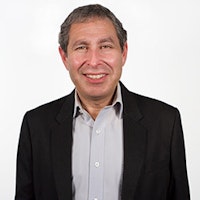Understanding Your Investment Persona
Think about this question very carefully. Are you a hands-on, or a hands-off investor?
If you describe yourself as a hands-on investor, maybe that’s because you take a keen interest in your asset positions day-to-day, and even trade in and out of shares on a fairly frequent basis.
You also could be invested into actively managed funds, which are run by professional investment managers who aim to outperform a specific market index. There’s nothing wrong with that.
On the other hand, if you see yourself as a hands-off investor, maybe that’s because you’re not that interested in the day-to-day aspects of your investments.
You’re probably invested into longer-term assets, including property and other illiquid assets, and possibly have equity positions in exchange-traded funds that don’t use professional fund managers. Instead, they have a well-diversified, passive strategy (click here to see our portfolios) to automatically buy and sell company shares within an entire stock market index. There’s nothing wrong with that either.
Is being hands-on better than hands-off?
As a hands-on investor, your view is that having your hands on the investment tiller at all times means you can respond quickly to situations and make better, more informed choices.
Or, as a hands-off investor, you can probably take comfort in the fact that you don’t get caught up in the day-to-day market noise that often drives other investors into making impetuous investment decisions.
But, believe it or not, there is a happy medium between the two, and the sooner you realise that, the better off you’ll be as an investor over the long term.
Even if you do consider yourself a hands-off, passive-style investor, the reality is that there is no such thing as passive investing.
That’s because every decision to invest capital always involves making an active choice. You do that right at the beginning, by deciding to invest in a particular asset or product in the first place. While you may take a “set and forget” approach to holding that asset afterwards, there’s no doubt that at various stages you will take an interest in how it’s performing.
You also make active decisions along the way, even if that’s to continue holding a particular asset, and you make an active choice when deciding to sell.
What investment products are best?
Perhaps a better question to ask yourself is whether you should focus on investment products where fund managers play a minimal role, or products where fund managers make active investment decisions by buying and selling shares to achieve better long-term returns?
Here, the decision largely comes down to investing in products that are designed to match the market’s performance, minus management fees, or products that are run by investment managers who are focused on outperforming the market, after fees.
And the best response to that is, rather than thinking one way or the other, it’s best to do both.
Your weighting to one investment strategy over the other should be based on your financial objectives (including your investment time frame and your broader financial needs) and your risk appetite.
A blended approach
What’s most important to recognise is that a blended investment approach is really achieving the best of both worlds.
For example, using a blend of exchange-traded funds that track a region or asset class are a great way to achieve broad portfolio diversification. Your returns will largely follow the markets or sectors you are invested into.
Likewise, using actively managed funds that have a portfolio of hand-selected stocks based around a specific strategy are also a solid way of gaining broad exposures with a view to achieving stronger returns than the broader market.
Your returns will be determined by the performance of the stocks chosen by the investment team overseeing the products you have selected.
There is no right or wrong way. The most sensible approach is to have a foot in both camps.
In other words, taking a holistic approach to constructing your investment portfolio – using passive and active strategies that cut across different asset class boundaries – will provide durable long-term returns based around your personal objectives.
Whether you see yourself as hands-on or hands-off doesn’t really matter, and InvestSMART has a wide range of options to cover off both strategies.
Find out more about InvestSMART’s holistic investment solutions by clicking here.
Frequently Asked Questions about this Article…
Hands-on investing involves actively managing your investments, frequently trading shares, and possibly using actively managed funds. Hands-off investing, on the other hand, focuses on long-term assets like property and exchange-traded funds with a passive strategy, minimizing day-to-day involvement.
Neither approach is inherently better. Hands-on investors can quickly respond to market changes, while hands-off investors avoid the noise of daily market fluctuations. A balanced approach, combining both strategies, can be beneficial for long-term investment success.
While you may adopt a 'set and forget' approach, every investment decision involves an active choice. Even passive investors make active decisions when choosing to invest, hold, or sell assets.
A blended investment approach combines passive and active strategies, offering broad diversification and the potential for stronger returns. This holistic strategy can provide durable long-term returns tailored to your personal financial objectives.
ETFs are a key component of a hands-off strategy, offering a diversified, passive investment approach. They track entire stock market indices, allowing investors to benefit from market performance without active management.
Actively managed funds are central to a hands-on strategy, as they involve professional managers making active decisions to buy and sell shares with the goal of outperforming the market.
Your choice should depend on your financial objectives, investment time frame, and risk appetite. A balanced approach, using both passive and active products, can help achieve a well-rounded investment portfolio.
InvestSMART offers a holistic approach, providing a range of options for both hands-on and hands-off investors. Their solutions incorporate both passive and active strategies to meet diverse investment needs and objectives.
















